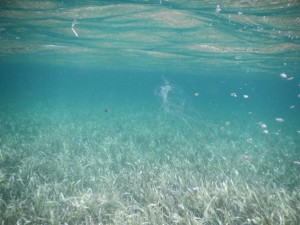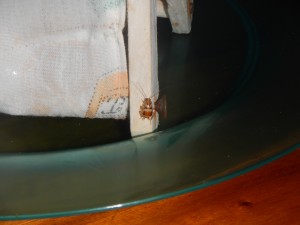This morning we all improved our skills clearing our mask and snorkel without surfacing while on a reef scavenger hunt. There were many annelids around but you have to be looking for them because of their small size, and sometimes they were under corals or in crevices. I saw the same star horseshoe worms, but also a light orange-ish christmas tree worm and a brown and white social feather duster. They are beautiful little creatures. I also spotted some fire coral around the patch reef. Aside from the annelids and hydrozoans I saw corals, sponges, sea fans, fish, urchins, barracuda, and a nurse shark today.
This afternoon we practiced using a transect and quadrants to survey things on the reef or ocean floor. It’s tricky but I’m getting the hang of it. We also got the chance to walk to a part of the island covered with thousands of fragments of old, fossilized corals. This was really helpful in practicing identifying them based on their corallites and overall shape. I am ready for what tomorrow has to bring!
Sophia Streeter
5/26













